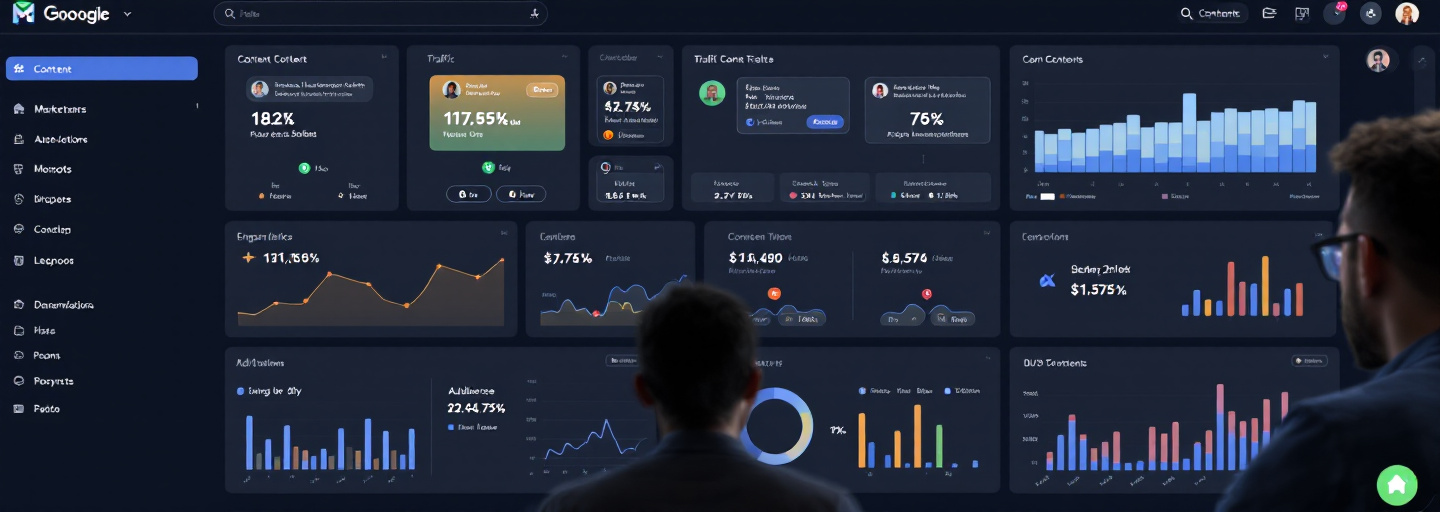How to Identify and Write for Your Target Audience
Learn how to identify and write for your target audience with research methods, content strategies, and SEO optimization tips.

How to Identify and Write for Your Target Audience
According to a 2023 Content Marketing Institute study, businesses that develop content based on audience research are 374% more likely to achieve their goals. Yet many content creators still struggle to connect with their intended readers. Understanding your target audience isn't just about demographics—it's about creating content that genuinely resonates and drives meaningful engagement.
Understanding the Importance of Knowing Your Audience
Impact on Content Performance
When a financial blog shifted from generic investment advice to content specifically addressing millennial first-time investors, their conversion rate tripled within two months. This transformation wasn't accidental—it came from recognizing that their audience wasn't "everyone interested in finance" but rather young professionals with specific concerns about student debt and housing costs.
Content that misses its audience wastes resources and opportunities. A B2B software company once published a series of beginner-level tutorials that generated high traffic but minimal conversions. Analysis revealed their actual readers were experienced IT professionals seeking advanced solutions, not basics. After realigning their content strategy, their lead quality improved by 67%.
Audience-aligned content directly impacts these key performance indicators:
- Increased time on page (readers stay when content speaks to them)
- Higher conversion rates (solutions match actual problems)
- Improved social sharing (content feels personally relevant)
- Better search rankings (content matches search intent)
- Lower bounce rates (visitors find what they actually need)
Building Brand Authority
Authority comes from consistently solving specific problems for specific people. The fitness brands that dominate particular niches—whether it's strength training for women over 50 or nutrition for endurance athletes—build stronger followings than those attempting to serve everyone.
When you understand your audience's language, challenges, and goals, your content naturally incorporates the terminology and frameworks they recognize. This precision in addressing their needs is what our AI-powered platform helps identify through comprehensive data analysis of audience preferences and behaviors.
Defining Your Ideal Reader Profile

Demographics That Matter
Not all demographic factors carry equal weight for content strategy. A B2B software company found that job role and company size were far more predictive of content preferences than age or location. Meanwhile, a consumer health brand discovered that life stage (new parent, empty nester) influenced content engagement more than traditional demographic markers.
The question isn't simply "who is my audience?" but rather "which characteristics most influence how they'll respond to my content?" For some businesses, industry experience dramatically affects content comprehension. For others, technological comfort determines format preferences.
Understanding Psychographics
Psychographics reveal the "why" behind audience behaviors. A sustainable clothing brand discovered their audience wasn't primarily motivated by environmental concerns (as they'd assumed) but by durability and long-term value. This insight transformed their messaging from eco-focused to quality-centered, with environmental benefits as a supporting point.
Content that connects with readers' values and motivations generates stronger responses than material that simply matches demographic profiles. Ask what frustrates your readers, what aspirations drive them, and what beliefs shape their decisions.
Creating Actionable Personas
| Profile Element | Key Considerations | Content Impact |
|---|---|---|
| Professional Background | Industry expertise, role seniority, technical knowledge | Determines content complexity and technical depth |
| Content Consumption Habits | Preferred formats, reading time, device usage | Influences content length and formatting |
| Pain Points | Common challenges, urgent needs, frustrations | Shapes topic selection and solution focus |
| Learning Style | Visual, practical, theoretical preferences | Guides content presentation and examples |
Based on content marketing research and audience engagement studies across digital platforms.
Effective personas include decision triggers—specific factors that prompt your audience to take action. A marketing agency found that their clients' primary decision trigger wasn't price or service range but response time. This insight led them to emphasize their communication processes in content, resulting in a 40% increase in qualified leads.
Research Methods to Identify Your Audience
Data-Driven Analysis
Google Analytics reveals more than page views—it shows you which content topics create engagement patterns. Look for correlations between content themes and metrics like time on page, pages per session, and conversion rates. These patterns often reveal audience interests more accurately than demographic data alone.
Social media analytics provide insights beyond follower counts. The comments section often contains vocabulary and concerns that should inform your content strategy. One software company noticed their audience consistently used different terminology than their marketing team, leading to a complete revision of their content glossary.
Direct Feedback Collection
Exit surveys with a single question ("Did this article answer your question?") often yield more actionable insights than comprehensive questionnaires with low completion rates. Follow up with interested respondents for deeper conversations about their content needs.
Customer support conversations contain goldmines of audience research. When support teams track common questions and confusions, content teams can address these specific knowledge gaps. This alignment between support and content often produces the highest-performing articles in terms of reducing support tickets.
Competitive Intelligence
Analyze comment sections on competitor content to identify unaddressed questions and concerns. These gaps represent opportunities for your content to provide value where others have missed the mark.
Follow these research steps for comprehensive target audience research:
- Setting up analytics tracking with audience segments
- Creating effective surveys that focus on content preferences
- Analyzing social media insights beyond basic engagement metrics
- Conducting competitor analysis to identify content gaps
- Interpreting search intent data to understand question patterns
For teams seeking to streamline this process, BlogBuster's platform automates much of this audience analysis through AI-powered insights, identifying patterns that might otherwise require weeks of manual research.
Crafting Content That Resonates with Your Audience

Aligning Tone and Style
Your audience's professional environment shapes their expectations for content tone. A marketing consultant writing for startup founders found that conversational, direct language outperformed more formal content. Meanwhile, a financial advisor writing for corporate executives saw better results with structured, data-rich articles.
Content style should reflect how your audience consumes information in their professional lives. If they regularly read industry reports, your long-form content should include similar structural elements. If they rely on quick-reference guides, your content should include scannable sections and clear takeaways.
Addressing Pain Points
Specificity matters when addressing audience challenges. Rather than writing broadly about "improving productivity," a project management tool created content addressing specific scenarios: "Managing remote team deadlines across time zones" and "Coordinating handoffs between design and development teams." This specificity increased both search visibility and engagement.
The most effective content acknowledges the constraints your audience faces. A marketing platform created content specifically for "marketing teams of one," acknowledging the unique challenges of marketers without specialized team members. This recognition of real-world limitations made their solutions feel more credible and applicable.
Storytelling Techniques
| Audience Type | Content Approach | Writing Style | Example Topics |
|---|---|---|---|
| Technical Professionals | Detailed analysis with data | Precise, technical | Implementation guides, technical comparisons |
| Business Leaders | Strategic insights | Concise, authoritative | ROI analysis, market trends |
| Creative Professionals | Visual examples | Inspirational, descriptive | Design case studies, creative processes |
| Small Business Owners | Practical solutions | Direct, actionable | Cost-effective strategies, quick wins |
Based on content engagement patterns across different professional segments.
Stories should feature protagonists your audience identifies with. A cybersecurity company found that stories about mid-sized businesses facing realistic threats performed better than dramatic tales of enterprise-level breaches. Their audience saw themselves in these scenarios, making the content more compelling and actionable.
Optimizing Content for SEO and Audience Engagement
Search Intent Optimization
The most effective SEO content optimization starts with search intent, not just keywords. When a marketing agency analyzed their highest-converting content, they found that articles matching the exact stage of the buyer's journey (awareness, consideration, decision) outperformed content that simply targeted high-volume keywords.
Different audience segments often use different search terminology for the same concepts. A healthcare provider discovered that medical professionals searched using clinical terms, while patients used symptom-based language. Creating content clusters addressing both vocabularies improved their visibility across audience segments.
Engagement Metrics
Content that generates comments often ranks better than content with similar backlink profiles but no engagement. This correlation suggests that search engines may use engagement signals as quality indicators. Encouraging audience participation through specific questions can improve both engagement metrics and search performance.
Audience engagement methods should align with how your readers naturally interact. Some audiences prefer to engage through detailed comments, while others respond better to polls or simple reaction options. Testing different engagement mechanisms reveals which formats your specific audience prefers.
Technical SEO Elements
Optimize for audience-specific SEO content optimization with these priorities:
- Aligning keywords with audience search behavior and industry terminology
- Structuring content for featured snippets that answer audience-specific questions
- Optimizing for mobile reading experience based on audience device preferences
- Incorporating audience-specific examples that improve relevance signals
For teams looking to streamline this process, our platform automates SEO optimization while maintaining audience focus, ensuring content performs well both for search engines and human readers.
Measuring and Refining Your Content Strategy

Key Performance Metrics
Different content goals require different measurement approaches. A SaaS company found that for top-of-funnel educational content, email signups were a more meaningful metric than direct sales conversions. Meanwhile, their comparison articles were better measured by demo requests.
When tracking content performance, segment metrics by audience type. A financial services firm discovered that their content performed differently across audience segments—retirement-focused content drove high engagement but slow conversion, while investment content drove faster action from a smaller audience.
Testing and Iteration
Small tests yield clearer insights than complete overhauls. A B2B company tested different content introductions with the same body content and found that problem-focused openings outperformed statistic-heavy introductions by 37% for their technical audience.
Content testing should focus on elements that directly connect to audience preferences. Headlines, examples, and call-to-action phrasing often yield more meaningful test results than design elements for content-focused strategies.
Long-term Strategy Adjustment
Audience needs evolve over time. A marketing platform that had successfully targeted small business owners found their audience's sophistication level increased over three years. This evolution required gradually increasing the complexity of their content to maintain relevance.
To implement your own measurement and refinement process:
- Establish baseline performance metrics for current content
- Identify one audience-focused element to test (tone, format, example types)
- Run controlled tests changing only that element
- Document results and audience feedback
- Implement successful changes across similar content
The most successful content strategies evolve through consistent, audience-focused refinement rather than periodic complete overhauls.